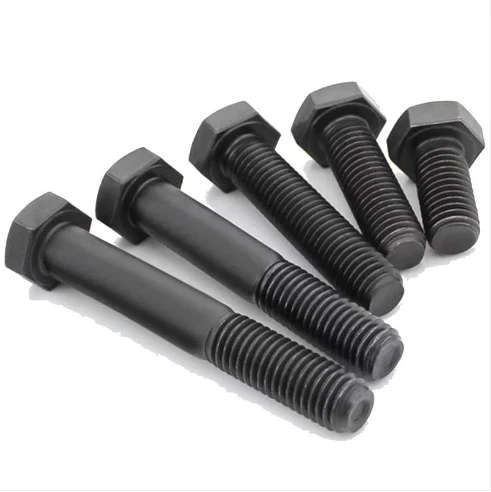Manufacturers of Bolts for Thread Cutting Applications and Industrial Use
Nov . 10, 2024 20:44 Back to list
Manufacturers of Bolts for Thread Cutting Applications and Industrial Use
The Evolution of Thread Cutting A Look into Bolt Manufacturers
In the industrial landscape, the manufacturing of threaded bolts plays a critical role in various applications, from construction to automotive industries. Thread cutting, a key technique in bolt production, has evolved significantly, owing to technological advancements and the increasing demand for high-quality fasteners. This article explores the intricacies of thread cutting in bolt manufacturing, emphasizing the techniques, innovations, and the leading manufacturers in the field.
Understanding Thread Cutting
Thread cutting refers to the process of creating helical grooves or threads on a cylindrical surface. This is essential for bolts as threaded surfaces allow for the secure fastening of components. Depending on the application and material requirements, different methods of thread cutting are employed, including traditional techniques like single-point threading and modern methods such as CNC (Computer Numerical Control) machining.
Single-point threading has been a staple in manufacturing for decades. The process involves a single cutting tool that progressively cuts threads into the base material. It is favored for its simplicity and effectiveness, particularly in custom jobs or low-volume production runs. However, it can be time-consuming, especially for high-volume manufacturing.
With advancements in technology, CNC machining has gained prominence in the industry. CNC machines are equipped with sophisticated software that allows for precision and repeatability, significantly boosting production efficiency. Additionally, these machines can produce complex geometries and varied thread specifications, catering to the diverse needs of manufacturers.
Key Techniques in Thread Cutting
In the realm of bolt manufacturing, several techniques are notable
1. Tapping This method involves creating internal threads using a drill and a tap tool. Tapping is commonly used for nuts or when internal fastening is required.
2. Roll Threading A faster method where threads are formed through deformation rather than cutting. This method produces stronger threads due to the work-hardening of the material.
3. Thread Grinding Used for precision threads, this technique involves grinding tools that can produce extremely tight tolerances. It’s particularly useful in applications like aerospace where high accuracy is necessary.
thread cutting bolts manufacturers

4. Thread Milling An innovative approach that uses a circular cutting tool to create threads. This method is efficient and allows for modification during the manufacturing process, enabling the production of custom threads without changing tools.
Each technique has its unique advantages and is selected based on the application, material, and volume required by the manufacturer.
The Role of Technology in Thread Cutting
Technological advancements have significantly transformed thread cutting. Automation and robotics play a crucial role in enhancing efficiency and accuracy. Automated systems can operate continuously, reduce human error, and increase output. Moreover, the integration of AI and machine learning allows manufacturers to optimize their processes based on real-time data, ensuring that production meets demand without sacrificing quality.
Furthermore, the rise of additive manufacturing is beginning to influence bolt production. While traditionally known for creating parts layer by layer, advances in 3D printing technology are being explored for prototyping and even small-scale production of threaded components.
Leading Manufacturers in the Industry
Several manufacturers have established themselves as leaders in the field of thread cutting bolts. Companies such as Fastenal, Parker Hannifin, and Illinois Tool Works have adopted innovative practices and invested in advanced machinery to produce high-quality fasteners. These companies not only focus on mass production but also on providing tailored solutions for specialized applications.
Additionally, smaller manufacturers are capitalizing on niche markets by offering custom-threaded bolts and fasteners, thereby driving competition and innovation. The focus on quality assurance and adherence to international standards, such as ISO and ASTM, is a hallmark of successful manufacturers in this space.
Conclusion
The thread cutting process is central to bolt manufacturing, influencing not just the quality but also the cost and efficiency of production. As technology continues to advance, manufacturers must adapt to the changing landscape, embracing new techniques and innovations. The future of thread cutting holds the promise of even higher precision, efficiency, and sustainability, catering to the ever-evolving demands of industries worldwide. As we look ahead, it is clear that the landscape of bolt manufacturing will continue to thrive, driven by innovation and the relentless pursuit of excellence.
Latest news
-
High-Quality Panel Stud Bolt Reliable Panel Stud Bolt Factory & Suppliers
NewsJul.08,2025
-
High-Precision Fine Thread Locknuts Manufacturer & Supplier Custom Solutions
NewsJul.08,2025
-
PH Imperial Stud Bolt – High Strength Fasteners from Leading Supplier & Factory
NewsJul.07,2025
-
High-Quality Allen Wrench Bolts Leading Factory, Company & Suppliers
NewsJul.07,2025
-
Wholesale Ball Stud Bolt - High Quality Supplier & Factory Price Reliable Wholesale Ball Stud Bolt Company
NewsJul.06,2025
-
High-Strength Alloy Bolts Manufacturer & Supplier Quality Alloy Fasteners Factory
NewsJul.06,2025
